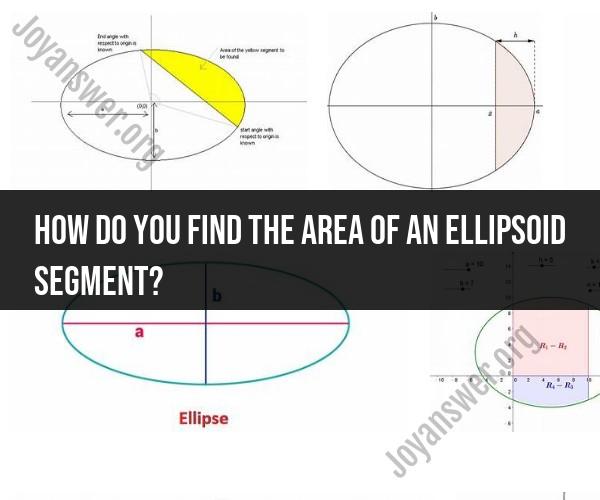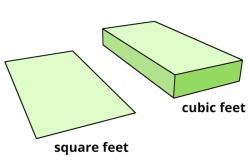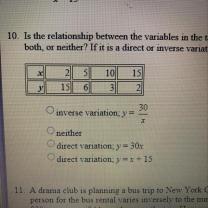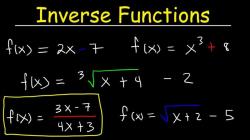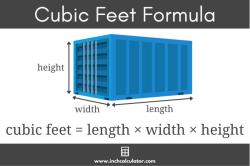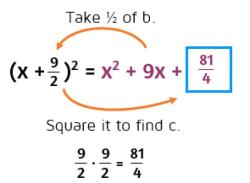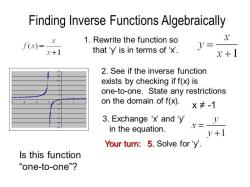How do you find the area of an ellipsoid segment?
To find the area of an ellipsoid segment, you'll need to know the dimensions of the ellipsoid, specifically the lengths of its three semi-axes (a, b, and c) and the height of the segment (h). The formula for the surface area of an ellipsoid segment is:
Here's a step-by-step guide on how to find the area of an ellipsoid segment:
Measure the Axes: Measure the lengths of the three semi-axes: a, b, and c. These values represent the ellipsoid's dimensions. Make sure that 'a' is the semi-major axis, 'b' is the semi-intermediate axis, and 'c' is the semi-minor axis.
Determine the Segment Height: Measure the height of the segment, 'h.' This is the distance from the center of the ellipsoid to the top of the segment.
Use the Formula: Plug the values of 'a,' 'b,' 'c,' and 'h' into the formula mentioned above and calculate the area.
Calculate the Natural Logarithm: In the formula, you'll need to calculate the natural logarithm (ln). Make sure your calculator or software is set to handle natural logarithms.
Compute the Area: Calculate the area using the formula, and be sure to follow the order of operations, including addition, multiplication, and the natural logarithm.
Round as Necessary: Depending on the precision of your measurements and the desired level of accuracy, round the result to an appropriate number of decimal places.
Calculating the area of an ellipsoid segment can be complex due to the natural logarithm and the presence of different axes. It's advisable to use a calculator or specialized software to perform this calculation accurately. This formula applies to a specific case of an ellipsoid segment, and it may not be suitable for all ellipsoid shapes. Be sure to understand the geometry and characteristics of the ellipsoid you are working with to ensure the formula is applicable.
Calculating the Area of an Ellipsoid Segment: Mathematical Methods
To calculate the area of an ellipsoid segment, there are a few different mathematical methods that can be used. One method is to use elliptic integrals. Elliptic integrals are a type of integral that cannot be solved analytically, but can be approximated using numerical methods.
Another method for calculating the area of an ellipsoid segment is to use a technique called the Gauss-Bonnet theorem. The Gauss-Bonnet theorem is a theorem in differential geometry that relates the curvature of a surface to its Euler characteristic.
Finally, the area of an ellipsoid segment can also be calculated using a technique called the divergence theorem. The divergence theorem is a theorem in vector calculus that relates the surface integral of a vector field over a closed surface to the volume integral of the divergence of the vector field over the region enclosed by the surface.
Geometry Made Easy: Finding the Area of an Ellipsoid Segment
One way to think about the area of an ellipsoid segment is to imagine that the ellipsoid is a sphere and the segment is a cap. The area of the cap can then be calculated using the following formula:
A = 2 * π * r^2 * (1 - cos(θ))
where:
Ais the area of the capris the radius of the sphereθis the angle between the normal vector to the cap and the vertical axis
The area of the ellipsoid segment can then be calculated by scaling the area of the cap by the ratio of the semiaxes of the ellipsoid.
Ellipsoid Segment Analysis: Determining Its Surface Area
The surface area of an ellipsoid segment is a function of the semiaxes of the ellipsoid and the angles of the segment. The following formula can be used to calculate the surface area of an ellipsoid segment:
S = 4 * π * a * b * c * F(φ1, φ2)
where:
Sis the surface area of the ellipsoid segmenta,b, andcare the semiaxes of the ellipsoidφ1andφ2are the angles of the segmentF(φ1, φ2)is an elliptic integral
The elliptic integral F(φ1, φ2) can be approximated using numerical methods.
Conclusion
Calculating the area of an ellipsoid segment can be a complex task, but there are a few different mathematical methods that can be used. The best method to use will depend on the specific situation.
